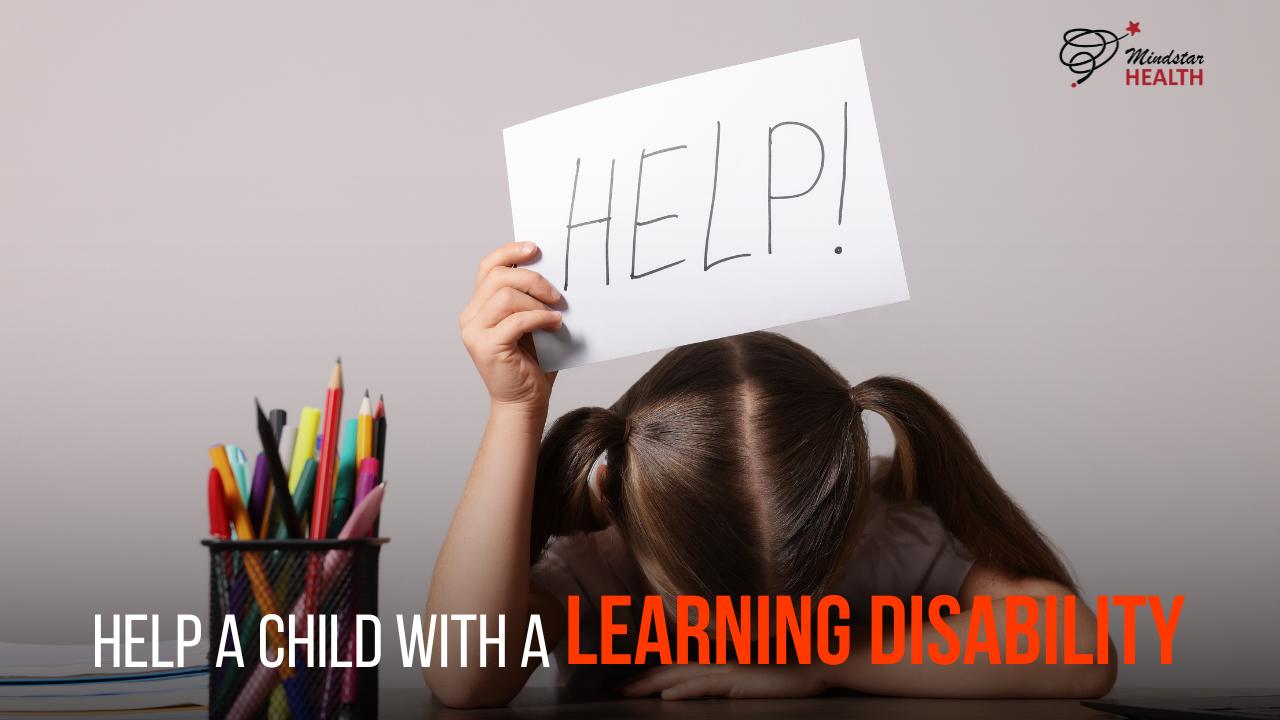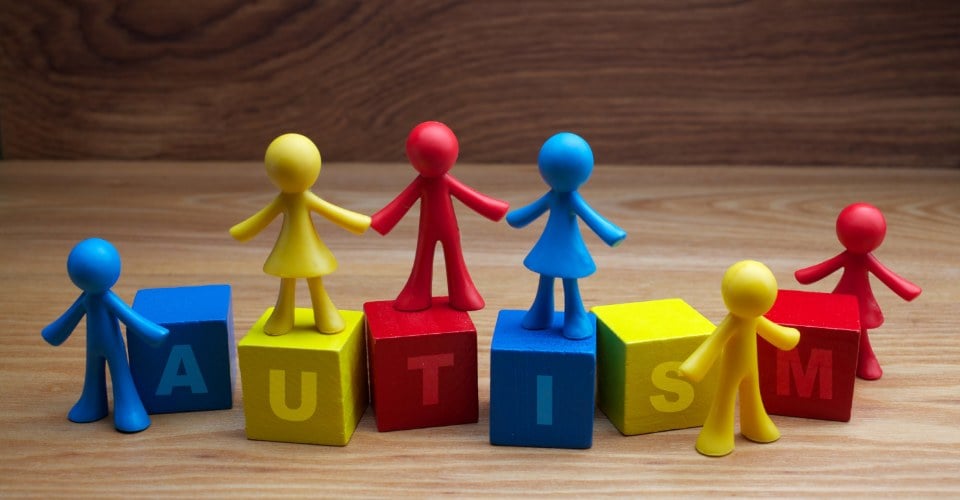Imagine a child named Alex, who loves building intricate Lego structures but struggles to read simple sentences. Despite their creativity, Alex feels frustrated and left behind in school. This is the reality for many children with learning disabilities. But here’s the good news: with the right strategies, we can help them unlock their potential and thrive. In this article, we’ll explore practical ways to support children like Alex, focusing on learning strategies, emotional support, and skill development.
Understanding Learning Disabilities
Learning disabilities are not a reflection of intelligence. They are neurological differences that affect how children process information. According to the National Center for Learning Disabilities, 1 in 5 children in the U.S. has a learning or attention issue. Recognizing these challenges early is key to providing the right support.
Types of Learning Disabilities
- Dyslexia (Reading Difficulties)
Affects word recognition, language decoding, and reading comprehension. Impacts 5-10% of the population, hindering reading fluency and understanding. - Dyscalculia (Math Challenges)
Difficulty with numbers, counting, and basic arithmetic operations. Approximately 6% of students experience dyscalculia, often requiring specialized teaching methods. - Dysgraphia (Writing Struggles)
Affects handwriting, spelling, and written expression. Children may struggle to organize thoughts or form letters correctly. - ADHD (Attention and Focus Issues)
Impacts concentration, impulse control, and task completion. Affects 5-7% of children globally, often necessitating structured learning environments.
Signs to Watch For
- Difficulty following instructions.
- Challenges with reading, writing, or math.
- Low self-esteem or frustration with schoolwork.
- Trouble understanding social cues or making friends.
- Delayed speech and language development.
Effective Learning Strategies
- Individualized Education Plans (IEPs): Tailored programs to meet specific learning needs.
- Multi-Sensory Learning: Integrating visual, auditory, and hands-on activities to enhance understanding.
- Skill Development Activities: Teaching problem-solving and life skills through practical exercises.
- Social Skills Training: Promoting peer interaction and cooperative learning.For
Difficulty following instructions
- Struggles with reading, writing, or math
- Low self-esteem or frustration with schoolwork
The Importance of Early Intervention
- Research shows that early intervention significantly enhances cognitive and social development.
- Special education programs offer a supportive environment for building foundational skills.
- Therapy and tailored instruction improve independence and adaptability.
7 Learning Strategies to Help Your Child Succeed
1. Embrace Multi-Sensory Learning
Children with intellectual disabilities often process information differently, making multi-sensory learning strategies a vital tool for skill development. By engaging multiple senses—sight, touch, sound, and movement—these strategies enhance comprehension and retention. Research indicates that over 65% of children with intellectual disabilities benefit significantly when learning incorporates multiple sensory inputs.
Key Benefits:
- Strengthens Cognitive Connections: Activates various parts of the brain, fostering better understanding and memory.
- Supports Early Intervention: Helps address learning gaps through diverse and engaging experiences.
- Enhances Social Skills: Promotes interactive learning activities that encourage collaboration and communication.
Effective Strategies:
- Visual Aids: Utilize charts, flashcards, and videos to reinforce concepts. Studies show that visual learning can improve recall by 29%.
- Tactile Activities: Introduce clay modeling, sand writing, or textured letters to boost fine motor skills and cognitive association.
- Auditory Learning: Read aloud, use rhyming games, or incorporate musical cues to strengthen language and listening skills.
- Kinesthetic Techniques: Include role-playing, dance, or hands-on experiments to increase engagement and physical involvement.
Role of Parental Support:
Parents are essential in reinforcing multi-sensory learning at home. They can:
- Use positive reinforcement to celebrate progress and build confidence.
- Adapt everyday activities, such as cooking or gardening, into meaningful learning opportunities.
- Provide emotional support through patience, encouragement, and a nurturing environment.
By embracing multi-sensory learning, parents and educators can create a supportive and inclusive environment that fosters confidence, independence, and holistic development in children with special education needs.
2. Emphasize Strengths, Not Just Challenges
Children with intellectual disabilities often encounter obstacles in learning and daily tasks, but they also possess unique talents and abilities that, when nurtured, can significantly enhance their confidence and overall growth. Rather than focusing exclusively on areas of difficulty, parents and educators should identify and build on the child’s strengths to create a more empowering and encouraging learning environment.
Key Strategies:
- Celebrate Every Achievement
No accomplishment is too small to acknowledge. Recognizing progress—whether through praise, rewards, or simple gestures like a high-five—can reinforce a child’s efforts and inspire continued growth. Research indicates that celebrating small milestones boosts motivation and fosters a positive attitude toward learning. - Promote Hobbies and Extracurricular Involvement
Encouraging participation in activities such as music, art, sports, or dance can help children develop social skills, motor coordination, and emotional expression. Studies have shown that structured extracurricular activities enhance cognitive and social development, providing emotional support and building resilience. - Leverage Strengths to Overcome Challenges
Tailor learning approaches to align with the child’s strengths. For example, if a child is a visual learner, incorporate images, diagrams, or hands-on activities into lessons. If they excel in verbal communication, use storytelling or discussions to improve comprehension. By aligning learning strategies with their strengths, children can develop greater independence and skills.
Focusing on strengths rather than limitations not only builds confidence but also enhances social inclusion and emotional well-being. With the right support—through parental involvement, early intervention, and strength-based special education programs—children with intellectual disabilities can thrive academically and personally. Parental support, early intervention, and special education programs that emphasize strengths can help children with intellectual disabilities thrive in both academic and personal life.
3. Building a Structured Environment for Children with Intellectual Disabilities
A well-organized environment is essential for nurturing growth in children with intellectual disabilities. Predictable routines provide emotional security, reduce anxiety, and sharpen focus. Research from the National Center for Learning Disabilities highlights that structured daily patterns enhance cognitive functioning and emotional regulation, empowering children to follow instructions and cultivate independence.
Effective Strategies to Foster Structure
- Visual Schedules for Clarity
Charts, pictograms, or digital tools offer clear, visual timelines for daily tasks. These aids are particularly effective for children with learning differences, as studies indicate visual methods boost comprehension and task completion. - Simplify Tasks with Step-by-Step Guidance
Complex instructions can overwhelm. Breaking activities into manageable steps—such as dividing “get ready for school” into brushing teeth, dressing, and packing a bag—builds confidence and skill mastery. - Create a Calm Learning Space
A quiet, clutter-free area dedicated to learning minimizes distractions. Research underscores that low-sensory environments help children with intellectual disabilities concentrate and reduce stress.
Parental Engagement and Encouragement
- Consistency at Home: Children thrive when caregivers model routines, offering stability that bridges home and school life. Collaborative efforts between parents and educators reinforce structure.
- Celebrate Progress: Positive reinforcement—through verbal praise, rewards, or incentives—motivates children and strengthens desired behaviors. Studies link early interventions with consistent feedback to long-term improvements in social and academic skills.
By blending these approaches, caregivers can design supportive spaces that promote both learning and emotional well-being, helping children with intellectual disabilities reach their full potential.
4. Advocating for Special Education Support
Children with intellectual disabilities thrive when provided with tailored educational support. Special education programs, such as Individualized Education Plans (IEPs) and 504 Plans, offer customized accommodations to address academic, social, and emotional needs. According to the National Center for Education Statistics, approximately 7.3 million students in the U.S. benefit from special education services, underscoring the critical role of early intervention.
Why Special Education Matters
Traditional learning methods often fall short for children with intellectual disabilities. Special education bridges this gap by offering:
- Personalized Learning Approaches: Curricula and teaching methods are adapted to align with the child’s unique abilities and pace.
- Family Involvement: Schools actively engage parents to reinforce learning and provide consistency between home and school environments.
- Emotional and Social Growth: Teachers and counselors create supportive spaces that nurture confidence, motivation, and self-esteem.
- Targeted Skill Development: Programs focus on strengthening cognitive, social, and communication abilities, preparing children for long-term success.
How Parents Can Advocate Effectively
To ensure your child receives the best possible support, consider the following steps:
- Understand Your Child’s Rights
Familiarize yourself with the Individuals with Disabilities Education Act (IDEA), which guarantees access to free and appropriate public education for children with disabilities. - Maintain Open Communication with Educators
Regularly meet with teachers, specialists, and school staff to discuss your child’s progress, challenges, and any necessary adjustments to their learning plan. - Explore Assistive Technology
Tools like speech-to-text software, audiobooks, and visual aids can significantly enhance learning and engagement for children with intellectual disabilities.
By advocating for the right educational accommodations, parents can empower their children to develop essential life skills, build confidence, and improve their overall quality of life. Collaboration between families and schools ensures children receive the resources and support they need to thrive academically and beyond.
5. Foster Self-Advocacy Skills
Self-advocacy is a critical skill for children with intellectual disabilities, empowering them to build confidence, independence, and resilience. By teaching them to understand their needs and communicate effectively, they can better access resources, develop social skills, and enhance their overall growth.
Why Self-Advocacy is Important
Research from the National Center for Learning Disabilities (NCLD) shows that children who develop self-advocacy skills are more likely to excel academically and socially. When children understand their learning styles and actively seek support, they experience greater emotional well-being and self-esteem.
Key Strategies to Teach Self-Advocacy
Parents and educators can use the following approaches to help children with intellectual disabilities become effective self-advocates:
Teach About Strengths and Challenges
- Help children identify their unique strengths and abilities.
- Discuss their challenges in an age-appropriate and supportive way.
- Use clear, simple language and relatable examples to explain their needs and accommodations.
Practice Role-Playing
- Act out real-life scenarios where they might need to ask for help or advocate for themselves.
- Encourage them to practice requesting accommodations, such as in school or social settings.
- Use positive reinforcement to celebrate their efforts and build confidence.
Promote Clear Communication
- Teach simple phrases or sentences to help them express their needs effectively.
- Use visual aids, cue cards, or other tools if verbal communication is challenging.
- Emphasize the importance of respectful and assertive communication.
Offer Emotional Support
- Reassure children that asking for help is a sign of strength, not weakness.
- Celebrate their progress, no matter how small, and acknowledge their efforts.
- Encourage self-reflection to help them identify which strategies work best for them.
The Impact of Self-Advocacy
By nurturing self-advocacy skills through early intervention and consistent support, children with intellectual disabilities can achieve greater independence, improve their social interactions, and enjoy a more inclusive and positive learning environment. Parental and educator involvement plays a vital role in helping these children build the skills they need to thrive.
6. Nurture Emotional Well-Being
Children with intellectual disabilities frequently encounter frustration, anxiety, and self-esteem challenges arising from academic and social hurdles. Delivering unwavering emotional nurturing can amplify their self-confidence, determination, and enthusiasm for learning. Research underscores that consistent emotional encouragement bolsters adaptive coping skills and diminishes stress responses in these children.
Core Approaches to Foster Emotional Health
- Affirm Emotional Experiences: Recognize their feelings without criticism. Create space for them to voice challenges while offering empathy. Evidence shows that children receiving compassionate support cultivate greater resilience.
- Promote Honest Dialogue: Build a trusting atmosphere where they feel secure to share concerns without fear of judgment.
- Equip with Stress-Management Tools: Teach calming practices such as paced breathing, guided imagery, and grounding exercises to regulate emotions.
- Demonstrate Resilient Attitudes: Exhibit persistence during setbacks to model a proactive approach to problem-solving. Children often mirror the optimistic behaviors they observe.
- Celebrate Progress, Not Perfection: Recognize effort and incremental milestones through specific, heartfelt praise. This reinforces self-worth and sustains motivation.
- Weave Emotional Skills into Everyday Interactions: Use role-play scenarios to simulate social dynamics, helping them practice empathetic communication and adaptive reactions.
Caregiver Engagement & Proactive Support
Families are pivotal in shaping emotional growth. Studies reveal that early interventions targeting emotional intelligence and social competencies lead to better lifelong outcomes. Parents and caregivers can:
- Implement Predictable Routines: Consistency fosters emotional security and reduces anxiety.
- Facilitate Peer Connections: Encourage involvement in collaborative activities to strengthen interpersonal skills.
- Access Expert Resources: Partner with therapists, educators, or counselors to tailor strategies to the child’s unique needs.
By embedding these practices, caregivers empower children with intellectual disabilities to thrive—nurturing not just academic success, but also self-reliance, emotional balance, and a resilient outlook on life.
7. Promote Healthy Lifestyle Habits
Children with intellectual disabilities thrive when they follow a structured and healthy lifestyle. A well-rounded routine that incorporates balanced nutrition, regular physical activity, and sufficient sleep can significantly improve cognitive function, emotional well-being, and social skills.
Key Benefits of Healthy Habits
- Enhanced Focus & Cognitive Function: Proper nutrition supports brain development and improves learning abilities.
- Improved Emotional Regulation: Adequate sleep helps reduce anxiety and emotional instability.
- Better Physical Health: Regular exercise promotes motor skill development and overall physical well-being.
Practical Tips for Healthy Living
- Limit Screen Time Before Bed: Excessive screen exposure before bedtime can disrupt sleep patterns, making it harder for children to fall asleep and stay asleep.
- Encourage Physical Activity: Activities like swimming, biking, or yoga can boost motor coordination, build self-confidence, and provide valuable sensory stimulation.
- Offer Nutritious Meals & Snacks: A diet rich in vitamins, minerals, and protein has been shown to enhance cognitive performance and emotional stability. Incorporate whole grains, fruits, and proteins to maintain steady energy levels and mood.
How Healthy Habits Support Intellectual Disabilities
For children with intellectual disabilities, a healthy lifestyle fosters:
- Skill Development: Physical activities improve coordination and motor skills, which are essential for daily tasks.
- Social Skills: Group activities, such as team sports or dance classes, enhance communication and interaction abilities.
- Positive Reinforcement: Celebrating and rewarding healthy behaviors builds self-esteem and encourages children to maintain good habits.
- Long-Term Development: Early implementation of structured routines supports sustained growth and learning.
The Role of Parental Support
Parents play a vital role in fostering healthy habits. By providing structure, modeling positive behaviors, and reinforcing good choices, they create a nurturing environment that supports both special education needs and overall development. Consistent encouragement and involvement can make a significant difference in a child’s progress and well-being.
Key Takeaways
- Learning disabilities are manageable with the right strategies.
- Focus on your child’s strengths and provide emotional support.
- Collaborate with schools and professionals to create a supportive environment.
At a Glance
| Strategy | Key Action |
|---|---|
| Multi-Sensory Learning | Use visuals, sounds, and hands-on activities |
| Strengths-Based Approach | Nurture talents and interests |
| Structured Environment | Create routines and clear schedules |
| Special Education Support | Advocate for IEPs or 504 Plans |
| Self-Advocacy Skills | Teach children to ask for help |
| Emotional Support | Offer reassurance and coping tools |
| Healthy Habits | Prioritize sleep, diet, and exercise |
FAQs
Q: Can learning disabilities be cured?
A: Learning disabilities are lifelong, but with the right strategies, children can learn to manage their challenges effectively.
Q: How can I help my child with homework?
A: Break tasks into smaller steps, use visual aids, and provide a quiet workspace. Be patient and offer encouragement.
Q: What if my child’s school isn’t supportive?
A: Document your concerns, request meetings with school administrators, and consider seeking help from an educational advocate.
Conclusion
Helping a child with a learning disability requires patience, understanding, and a proactive approach. By embracing effective learning strategies, providing emotional support, and advocating for their needs, we can empower these children to overcome challenges and achieve their full potential. Remember, every small step forward is a victory worth celebrating. Let’s work together to create a brighter future for our children.





















Leave a Reply
You must be logged in to post a comment.